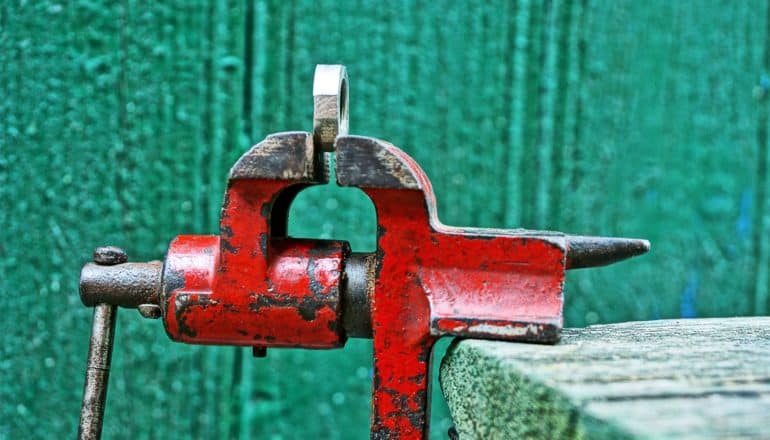
(Credit: Getty Images )
Tiny sensors check strain of materials under pressure
A new nano-sized sensor can measure the stresses and strains of materials at high pressures to see when they fail and hunt for new states of matter.

New nanoscale technology can image and measure more of the stresses and strains on materials under pressure.
As the researchers report in Science, that matters because, “Pressure alters the physical, chemical, and electronic properties of matter.”
Understanding those changes could lead to new materials or new phases of matter for use in all kinds of technologies and applications, says coauthor Valery Levitas, professor in engineering at Iowa State University and faculty chair and professor in aerospace engineering.
Levitas—whose lab specializes in experimental testing and computational modeling of high-pressure sciences—says the new sensing technology could also advance high-pressure studies in chemistry, mechanics, geology, and planetary science.
The paper describes how the researchers fit a series of nanoscale sensors—they call them nitrogen-vacancy color centers—into diamonds used to exert high pressures on tiny material samples. Typically, those “diamond anvil” experiments with materials squeezed between two diamonds have allowed researchers to measure pressure and changes in volume.
The new system allows researchers to image, measure, and calculate six different stresses—a much more comprehensive and realistic measure of the effects of high pressure on materials. The new tests also allow researchers to measure changes in a material’s magnetism.
“This has been one of the key problems in high-pressure science,” Levitas says. “We need to measure all six of these stresses across a diamond and sample. But it’s hard to measure all of them under high pressure.”
Levitas’ lab has done unique experiments by putting materials under high pressure and then giving them a twist, allowing researchers to drastically reduce phase transformation pressure and search for new phases of matter, which may have technological applications.
The lab also does multiscale computer modeling for high-pressure diamond anvil experiments—Levitas says it’s the only lab in the world doing such simulations. He says that experience with high-pressure simulations was why he was invited to collaborate with Yao’s sensor project. Simulations made it possible to reconstruct fields of all six stresses in the entire diamond anvil, where they could not be measured, as well as verify experimental results. Levitas plans to use this sensor in his lab.
The sensor enables “pursuit of two complementary objectives in high-pressure science: understanding the strength and failure of materials under pressure (e.g., the brittle-ductile transition) and discovering and characterizing exotic phases of matter (e.g., pressure-stabilized high-temperature superconductors),” the researchers write.
The nitrogen-vacancy sensing technology described in the paper has also been used to measure other material properties—for example, electric and thermal characteristics.
The researchers write it “can now straightforwardly be extended to high-pressure environments, opening up a large range of experiments for quantitatively characterizing materials at such extreme conditions.”
Additional coauthors are from the University of California, Berkeley and Iowa State.
Source: Iowa State University
The post Tiny sensors check strain of materials under pressure appeared first on Futurity.
Share this article:
This article uses material from the Futurity article, and is licenced under a CC BY-SA 4.0 International License. Images, videos and audio are available under their respective licenses.
Related Articles:
Ceramic sensors could let us know when bridges feel strain
Feb. 5, 2019 • futurityNew 2D sensors can cover any smooth surface
Dec. 7, 2018 • futurityLinks/images:
- https://doi.org/10.1126/science.aaw4352
- https://www.futurity.org/orbital-ferromagnetism-graphene-2120952/
- https://www.futurity.org/rubbery-material-1681312/
- https://www.news.iastate.edu/news/2019/12/31/highpressure
- https://www.futurity.org/high-pressure-nanoscale-sensor-materials-science-2248582/
- https://www.futurity.org


